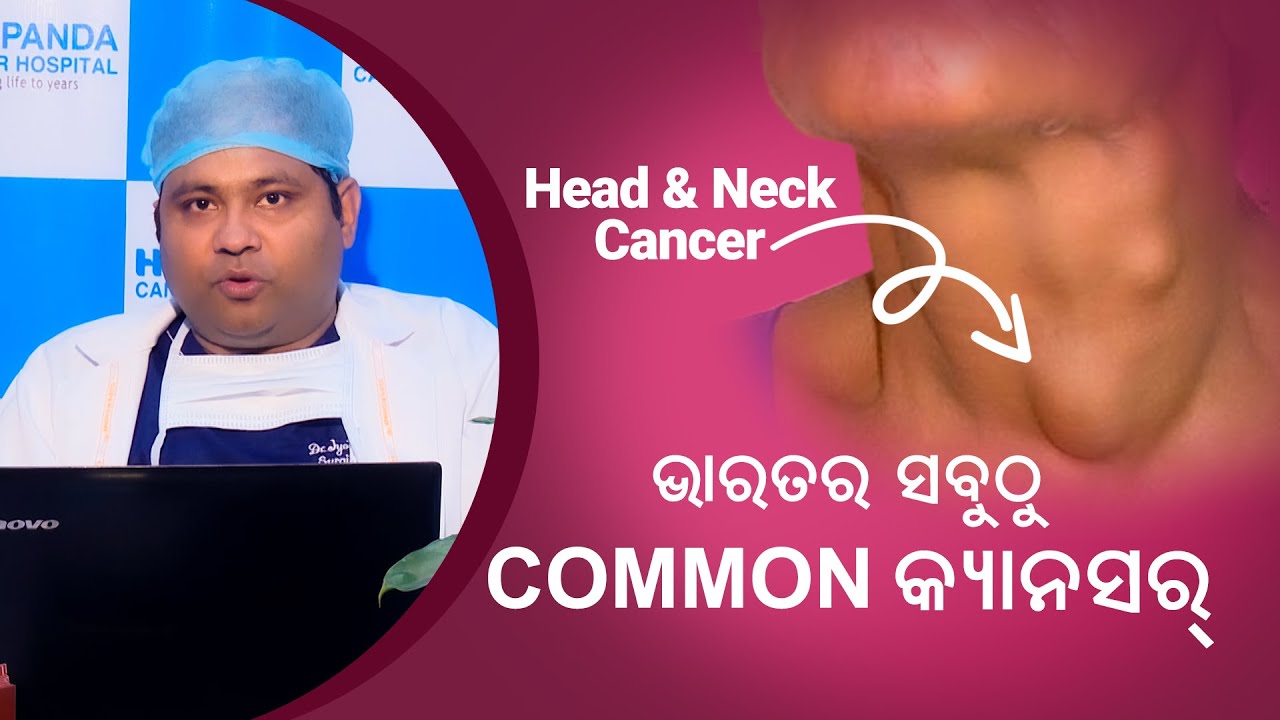What does Head & Neck cancer mean?
“Head & neck cancer” is the term used to describe a number of different malignant tumors that develop in or around the throat, larynx, nose, sinuses, and mouth.
What are the symptoms of Head and Neck cancer?
- Swelling or a sore that does not heal; this is the most common symptom
- Red or white patch in the mouth
- Lump, bump, or mass in the head or neck area, with or without pain
- Persistent sore throat
- Foul mouth odor not explained by hygiene
- Hoarseness or change in voice
- Nasal obstruction or persistent nasal congestion
- Frequent nose bleeds and/or unusual nasal discharge
- Difficulty breathing
- Double vision
- Numbness or weakness of a body part in the head and neck region
- Pain or difficulty chewing, swallowing, or moving the jaw or tongue
- Jaw pain
- Blood in the saliva or phlegm, which is mucus discharged into the mouth from respiratory passages
- Loosening of teeth
- Dentures that no longer fit
- Unexplained weight loss
- Fatigue
- Ear pain or infection
What causes Head and Neck cancer?
Alcohol and tobacco are major risk factors for cancers of the head and neck. All tobacco products, including cigarettes, cigars, pipes, and smokeless tobacco (chewing tobacco, snuff, or a type of chewing tobacco called betel quid) are linked to head and neck cancer (except for salivary gland cancers). Drinking any type of alcohol, such as beer, wine, or liquor, also raises the risk of getting cancers of the mouth, throat, and voice box.
How does Head and Neck cancer spread?
Most head and neck cancers are squamous cell carcinomas. This type of cancer begins in the flat squamous cells that make up the thin layer of tissue on the surface of the structures in the head and neck. Directly beneath this lining, which is called the epithelium, some areas of the head and neck have a layer of moist tissue, called the mucosa. If a cancer is only found in the squamous layer of cells, it is called carcinoma in situ. If the cancer has grown beyond this cell layer and moved into the deeper tissue, then it is called invasive squamous cell carcinoma.
How to detect head and neck cancer in its early stage?
Survival and quality of life in head and neck cancer are directly linked to the size of the primary tumor at first detection. In order to achieve substantial gain at these issues, both, primary prevention and secondary prevention, which is early detection of malignant lesions at a small size, have to be improved.
How are Head and Neck cancers treated?
Many cancers of the head and neck can be cured, especially if they are found early. Although eliminating the cancer is the primary goal of treatment, preserving the function of the nearby nerves, organs, and tissues is also very important. When planning treatment, doctors consider how treatment might affect a person’s quality of life, such as how a person feels, looks, talks, eats, and breathes.
Your care plan may also include treatment for symptoms and side effects, an important part of cancer care.
Overall, the main treatment options are surgery, radiation therapy, chemotherapy, targeted therapy, and immunotherapy. Surgery or radiation therapy by themselves or a combination of these treatments may be part of the treatment plan.
How to prevent Head and Neck cancer?
It’s not always possible to prevent cancer. However, you can reduce your risk of head and neck cancers by doing the following:
- quitting smoking and using tobacco products, including betel quid
- limiting alcohol use
- getting the HPV vaccine
Is Head and Neck cancer common?
Head and Neck cancer is the most common cancer these days.
Is head and neck cancer hereditary?
No head and neck cancer is not hereditary. But in some cases it is hereditary so do not need to panic.


